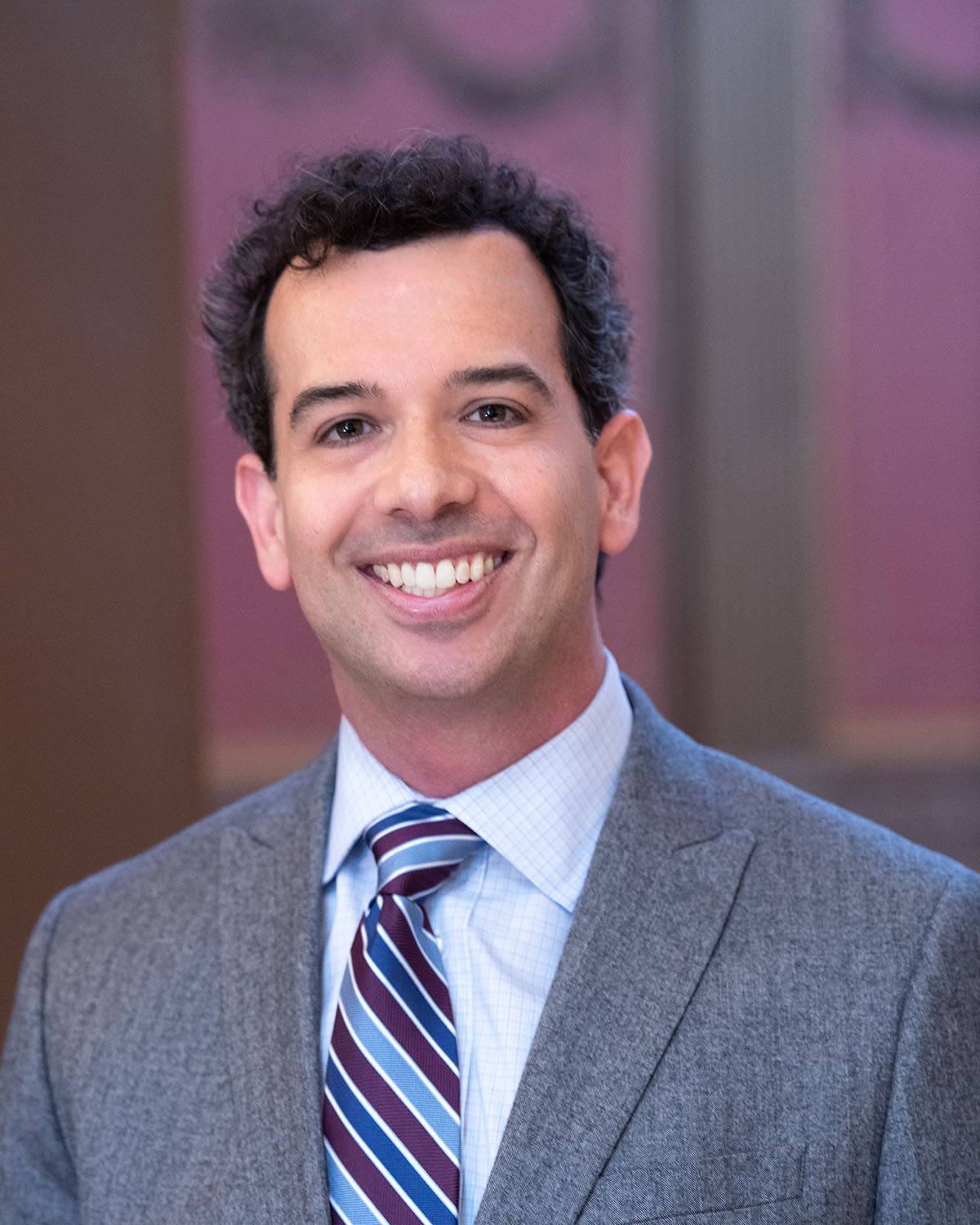

By Zachary Gorchow
President of Michigan Operations
Posted: May 7, 2015 10:39 AM
Governor Rick Snyder and legislators are so focused on their vows to find an answer to road underfunding in the wake of the epic thrashing Proposal 15-1 took Tuesday and unwilling to dwell on just how badly the proposal performed that they sound like Frank Drebin in “The Naked Gun” after the missile hits the fireworks plant and he hilariously advises onlookers “please disperse, nothing to see here.”
There will be plenty of time to focus on what’s next. More drama. More closed-door meetings in which the participants offer bromides about making progress, and afterwards to describe how the meetings went.
But this week should not pass without a proper reflection on just what a disaster Proposal 1 was. When was the last time 80 percent of the people agreed on anything in Michigan politics?
So much effort went into putting the proposal together. Difficult negotiations. Heated disputes. An all-night session. Hard work. Compromise. A momentary crisis on the Senate floor when it fell short of the needed votes. Years of discussions finally culminated into a plan that had Mr. Snyder and leaders from both parties feeling like they had finally cracked the code to increasing road funding for the first time since 1997.
Sure, they had to convince the voters, but if they could find agreement among themselves, surely it could be done.
And yet, by 8:15 p.m. Tuesday, just 15 minutes after the polls closed, with a quarter of the vote counted in Oakland County and the No vote at 78 percent, it was quickly and convincingly over. When the final votes were counted, the Yes vote topped out at 19.9 percent, the worst performance for a constitutional amendment in 67 years and fourth-worst ever. Humiliating seems not a strong enough word to describe the magnitude of the defeat.
So with that in mind, in no particular order, here are the 23 things that went wrong for Proposal 1. Why 23? Because I couldn’t think of a 24th.
1. A POLITICALLY WEAK PLAN: Voters had a choice between raising their taxes or not raising their taxes. What did everyone really think would happen? Pile on layers and complexity and Mr. Snyder and top legislators were ignoring a cardinal rule about ballot proposals: uncertain voters vote no. You could almost see the characters in the old “Saturday Night Live” “Bad Idea Jeans” sketch coming up with the plan.
2. A REPUBLICAN REVOLT: While many Republican legislators voted for this plan, Republican voters hated it. Seemingly every grassroots GOP organization urged a no vote.
3. STAFFING SHAKE-UP FOR YES CAMPAIGN: On December 19, the day after the Legislature put the plan on the ballot with no groundwork laid for a campaign, getting a campaign structure in place quickly was paramount. It took a bit, but by early January, one was taking shape with Howard Edelson, Truscott Rossman, Glengariff Group and Joe Slade White ready to helm the effort. But disagreements between the firms and Mr. Snyder’s chief liaison on the proposal, Terri Reid, prompted a parting of ways. New firms, Martin Waymire and WWP were brought aboard, and while they are fine firms, the Yes campaign had essentially lost one-third of the campaign and was starting from scratch.
4. POISONED WELL: Expectations were so high for the Legislature to pass something that there was a big backlash to the proposal, seeing it as the Legislature shirking its duties in a republic.
5. TINFOIL HAT CROWD: There’s no way to reason with people who decide to vote no because they think the state swindled them when it started the lottery more than 40 years ago to help fund schools (and in 1972 the lottery was intended to raise revenue for all state government not just schools, but somehow quickly that was what people believed) or those who think the state should pay for roads by shutting down Eastern Michigan University. These were actual positions I heard actual people espouse. But their votes count.
6. SCHUETTE FACTOR: Attorney General Bill Schuette deciding to oppose the proposal stung.
7. OVERPLAYING THE SAFETY MESSAGE: Mr. Snyder had tried for years to make the case that Michigan needed to fix its roads to save lives. It never convinced the public to rally to his side, yet that was the overwhelming message from the Yes side in the early stage of the campaign, and the public reaction, if anything, was highly negative.
8. SNYDER PRESIDENTIAL FLIRTATION: Mr. Snyder’s flirtation with running for president could not possibly have helped the proposal’s cause among Democratic voters, who were loath to give the governor on a win on anything.
9. FAILURE TO COUNTER THE ANGER: The proposal became a vessel for voters to vent their anger about whatever particular problem they have with the government. This was always a long shot to pass it, so why not try to counter the anger with some humor from a non-political figure. Could Brad Keselowski, the famous NASCAR driver and Rochester Hills native, have been persuaded to endorse the proposal and cut an ad featuring him dodging potholes, saying Michigan’s roads were even too much for him to navigate? Failing that, even a regular Joe or Jane in a car dodging potholes might have at least offered a message with which voters could identify.
Or what about a social media campaign using the guy behind the hysterical Not So Pure Michigan parody ads and have him do one that mocks the state’s roads, complete with “Cider House Rules” background music? The f-bombs, a staple of his parodies of things like Lions fans and various regions of the state, sadly, would have to go, and they would have to be 99 percent less offensive, but again, get folks to take a second look. Make them laugh. Remind them of what bothers them most about Michigan’s roads.
Linking to one of the Not So Pure Michigan videos here would probably get me fired, so let’s move on…
10. SNYDER BLOWS HIS ACHILLES: Clearly when Mr. Snyder agreed to a ballot proposal on December 18, part of the plan did not involve him rupturing his Achilles tendon in January, effectively immobilizing him for weeks and then getting hospitalized with a blood clot for several days. Murphy’s Law came into play. This wasn’t like Michigan State’s Kalin Lucas blowing his Achilles in the second round of the NCAA basketball tournament against Maryland and the Spartans still winning the game. The Yes side lost its most visible advocate for a key early stretch when the No side was just getting rolling.
11. LACKLUSTER DEMOCRATIC SUPPORT: It took a while for most top Democrats to embrace the plan in a full-throated way. By the time most did, it was too late.
12. PAUL MITCHELL: For the proposal to have a chance, there needed to be no real opposition. Republican Paul Mitchell put together a relatively low-budget operation that did enough to stoke a backlash to the proposal.
13. THE MICHIGAN CHAMBER STAYS OUT: Having the Michigan Chamber of Commerce on board would have meant more money and given a greater opportunity to make some inroads among Republicans. Instead, the chamber stayed neutral.
14. ILL-ADVISED DETROIT MOVE BY SNYDER ON EVE OF ELECTION: Days before the vote on Proposal 1, Mr. Snyder unveiled his controversial and mostly panned proposal to restructure public education in Detroit. For someone who has an incredible track record of staying on message, this was a startling error. Why unveil a politically unpopular proposal – that won’t even take effect for the upcoming school year – so close to Election Day?
15. NO REPEAT OF SPRING POTHOLE HYSTERIA: As cold as the winter of 2014-15 was, it did not match the historic cold of 2013-14, and the pothole hysteria supporters hoped would galvanize voters never materialized.
16. TERRIBLE HEADLINES FOR MDOT: From the controversial leased railcars sitting in a warehouse to audits finding some problems in Department of Transportation operations, the bad press the department has seen this year only helped make the case for those open to it that the state needed to get its house in order first before asking for new revenue.
17. ILL-TIMED CAPITAL PROJECTS IN THE CAPITAL CITY: The Senate’s decision to move to the Capitol View building and lease space provided plenty of ammunition to opponents who argued the state was squandering money that could instead go to the roads. A plan unveiled in late December for a new Capitol visitors center also took heat until officials shelved it.
18. THE ENTICEMENTS BACKFIRE: Remember how putting funding in the proposal for schools, local governments and tax relief for the working poor was supposed to help generate interest in the proposal for those less interested in roads? It didn’t. Even worse, a big chunk of voters seemed to recoil at the plan extending beyond roads even if there was a legitimate case for structuring the proposal in that way.
19. OVERSIGHTS IN THE PROPOSAL: Mistakes in the wording of the some of the bills meant there were at least three trailer bills that were going to be needed to clean up the plan if it passed. That’s not unusual for a major piece of legislation, but most major pieces of legislation also do not go before voters. And it only added to the criticism that Mr. Snyder and the Legislature threw the plan together at the last minute in the middle of the night without thoroughly vetting it.
20. THE EXISTING TRANSPORTATION FUNDING STRUCTURE IS A MESS: Mr. Snyder and supporters had a strong point in saying the proposal would lead to a simpler system with all taxes paid at the pump going to fund roads. But when even the head of the County Road Association of Michigan acknowledges that her own family members didn’t realize sales tax paid at the pump does not go to roads, it underscores just how difficult the task was for supporters to explain the benefits.
21. THE ‘NO PLAN B’ MESSAGE: As much some legislators are now promising swift action on a roads plan, the odds of pulling something big and substantive together in the near future are low. So when supporters urged passage because there was no “Plan B,” it wasn’t that they were wrong, but it only seemed to enhance voter anger at the proposal and the Legislature for failing to resolve the issue on their own without asking voters to finish the job.
22. THE PAY DOWN THE DEBT COMPONENT: The plan had a perfectly reasonable provision to focus much of the first two years of new revenue on paying down old debt to pay for years-ago road construction. The problem was it completely undercut the “your lives are in danger” message from the Yes side. If the problem is so dire, then why not put all the money into road work right away?
23. HOPE IS NOT A STRATEGY: The spokesperson for Safe Roads Yes, Roger Martin, had a great line Wednesday during one of the Proposal 1 autopsies, lamenting how the Legislature and the governor decided to go for a ballot proposal without researching in advance whether the public would support their approach. It was “like shooting an arrow without aiming,” he said.
So there you have it. A defeat for the ages. Maybe “The Blue Note” from “The Naked Gun 2 1/2” can make room on its disaster wall for an image paying homage to Proposal 1 (yes, that’s two “Naked Gun” references for those of you scoring at home).




